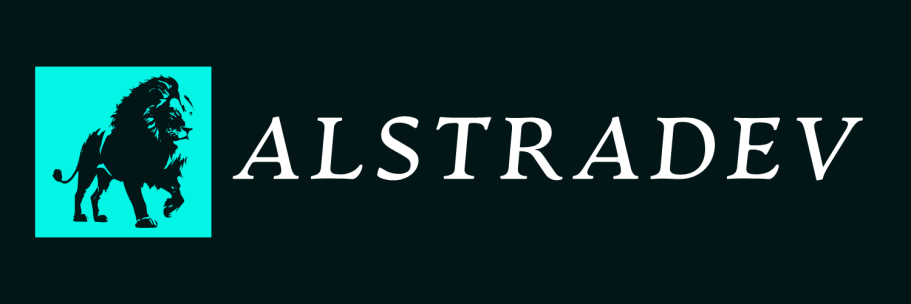
Silent Killers of Progress: Five Internal Catalysts of Strategic Cessation
A series on Redefining Core Roles Within Organisational Strategy - Part 1
28th May 2025 | James Weeks
This article marks the beginning of a three-part series in which I set out to redefine the core roles conventionally assigned to the three levels of organisational strategy: Corporate, business, and functional.
Across this miniseries, I will take the readers through three distinct phases:
- Article 1: Diagnose the problem. Uncover the hidden, and as you’ll see, all too common threats to strategy, which we term the five internal catalysts of strategic cessation.
- Article 2: Interrogate the structure. Analyse the conventional core roles of organisational strategy and explore how their current assignments can unintentionally enable these internal threats.
- Article 3: Reframe the approach. Present a fresh perspective on how core strategic roles and their relationships must evolve to build greater resilience and agility, helping organisations avoid stagnation and collapse.
Introduction
Strategy is a brutal business.
The payoff when one achieves a favourable position, competitive victory, or desired outcome is indescribable. Yet, the trade-off, the perilous path one treads on the journey of longevity and fulfilment, is not for the fainthearted.
Throughout the vast body of strategic discourse, enormous emphasis is placed on external perils: fierce competition, landscape shift, societal change and political impact, to name a few. Yet, very little, if any, emphasis is placed on the internal perils which cause a strategy to fail.
Organisational inertia is one thing – the refusal to adapt. But what is far worse is the inability to do so, especially when you see the threat coming.
The list of reasons that permit such a scenario can be summed up as one or a cluster of what I term the five internal catalysts of strategic cessation.
What is Strategic Cessation?
Strategic cessation is a state in which the strategy, or multiple concurrent strategies, are no longer capable of progression.
They are unable to evolve, no longer aligned, and destined for failure.
Within this state, short and medium-term adjustments will not suffice. Nothing short of a complete strategy overhaul will do. Or, as our proprietary framework – the Alstradev Cycle – describes it, a full modification.
Aside from the state itself being dangerous, three key reasons can make this one of the most precarious situations to be in:
1. The Inability to Admit When One is Wrong
Many strategists – especially top-tier – are proud individuals, and the uncomfortable truth is, many will never own a mistake, let alone admit it to others. To them, an admission of a blunder and full modification of a strategy is worse than defeat. Ostrich syndrome, burying one's head in the sand, is a real and devastatingly common phenomenon within major organisations.
2. The Silent Nature of Destructive Catalysts
Strategy is complicated all by itself. Yet, what makes it hazardous is the insidious, internal factors which can infect every level before anyone realises there is a problem. The longer said issues go unnoticed, the more deep-seated they become, and when the moment of realisation manifests, as is usually the case, it happens to be at the most inopportune time.
3. False Sense of Progression
On the surface, the strategy may appear to be running smoothly. Projects are moving. Resources are being distributed. People are busy. But underneath, the truth tells of a different reality. Behind the spectacle of surface-level observations lies dead weight: unexamined assumptions, unproductive activity and wasted effort pulling the organisation deeper into the abyss of irrelevance and incapability.
The Five Internal Catalysts of Strategic Cessation
These are the subtle, often overlooked forces that undermine strategy from within. Unlike external threats, which tend to be more visible and reactive, these internal catalysts creep in quietly – corroding progress, diminishing value, and weakening adaptability. Left unaddressed, they render even the most promising strategy ineffective.
The Five Internal Catalysts are:
- Passivity
- Detachment
- Inefficiency
- Indecision
- Overdependence
Passivity
An absence of initiative or timely response, leading to strategic lag or stagnation.
Passivity often lies concealed beneath the excuse of prudence or risk mitigation. In truth, it's a sign of fear, lethargy, or overconfidence in brand or legacy. Organisations that allow passivity to infect them wait too long to act, defer regularly and quietly hope they will stay relevant in a world constantly in flux.
Kodak is the quintessential example of the dangers passivity offers. Its failure to respond and pivot to the emerging digital photography landscape left it in rapid decline. A warning on what can happen when one fails to actively engage.
Detachment
Disconnection between levels, loss of situational awareness and fading alignment with the needs of end-users; deteriorating clarity, cohesion, pragmatism and trust.
Strategy is cohesion, there is no escaping this fact. The common thread of detachment seen within organisations in modernity is concerning: disconnect with their primary customer base, detachment between top-tier and on-the-ground levels, and the complete lack of situational awareness, to list a few situations. This is bad enough when it's a natural occurrence, it's especially bad when done in a drive to present as an inclusive entity.
Jaguar is the modern example of how detachment can be extremely costly. Their attempt to come back new and invigorated with an inclusive rebrand achieved nothing more than alienating their core customer base and causing once loyal customers to rethink their choices. Folly at the purest level.
Inefficiency
Poor utilisation of resources, effort, or communication flow, paired with a lack of capability, manpower and value.
It is not only about the pursuit of a position or outcome, but also the state in which you arrive. Attainment means nothing when you've depleted your resources, tainted your value and are unable to maximise or sustain that which you have achieved.
Remember, the game of strategy is about longevity, and longevity is the art of doing two things well: consistent innovation and the betterment of yesterday.
Take G4S in 2012, awarded a high-profile contract with the British government to secure the London Olympics, a contract they were unable to fulfil. A clear sign of reaching a position they were unable to maximise or sustain. In the end, the British Army had to pick up the slack and G4S were left humiliated.
Indecision
A failure to make timely, purposeful decisions leading to hesitation and drift.
Not to be mistaken with passivity, which is the conscious choice not to be actively engaged, indecision stems from an inability to commit, even when opportunity is evident. Where passivity sits purposely idle, indecision remains paralysed by over-analysis or fear of choosing the wrong path.
Yahoo serves as a stark warning to those who miss an opportunity not because of a lack of options, but due to the inability to make and commit to a decision. While the company had an array of problems, its most potent failure was the inability to act decisively and acquire Google and Facebook. Not only that, their hesitance to allow Microsoft to acquire them due to a grandiose sense of self-worth cost them tens of billions later on when they were eventually bought at a fraction of what Microsoft offered.
Overdependence
The heavy overreliance on single actors, sources, layers or systems, thus causing fragility and bottlenecks.
What may begin as a strength – expertise, a unique asset, legacy reputation, and so on – can quickly become a vulnerability if relied upon too heavily for value, success, or progression. Strength should never be measured in singularities; to do so narrows flexibility, restricts manoeuvrability, and offers a tempting point of exploitation for more capable competitors.
Remember Blockbuster? Its over-dependence on late fees and physical locations stands as a masterclass in strategic short-sightedness. Despite clear indications of shifting customer behaviour, the rise of digital convenience, and even the opportunity to take a stake in Netflix, Blockbuster clung to its legacy and paid the ultimate price. Dependence on minimal variables is risky enough – but to be over-dependent on singularities or past success is the swiftest path to ruin.
Closing Reflection: A Dangerous Silence
Each of the five internal catalysts – passivity, detachment, inefficiency, indecision and overdependence – carries a subtle but corrosive effect. Left unchecked, they can spread, cluster and destroy your strategy, not dissimilar to sepsis in the bloodstream. The external world is hazardous enough, but with these internal catalysts, ruin comes from within, and complacency and arrogance are the states in which they thrive.
Strategic cessation rarely announces itself until the juncture of crucial relivalence, that moment where a pivot, engagement, and adaptability are your last resort, only to be disabled by reality.
Are these catalysts hazardous? Extremely.
Are they fatal? Highly likely.
Is this avoidable? Absolutely.
Looking Ahead: From diagnosis to Flawed Roles
I hope you found some useful information within this article. As always, if you need help clarifying or would like to discuss strategic cessation or the five internal catalysts further, please don't hesitate to reach out.
Coming up, in part two, we dissect the issues with conventional core roles assigned to the three levels of organisational strategy. That is:
- Corporate: Direction
- Business: Competition
- Functional: Execution
Once we have defined them, we explore how in the contemporary world these roles facilitate the spread of passivity, detachment, inefficiency, indecision and overdependence, thus concluding that these primary roles are no longer fit for purpose.
THE ALSTRADEV PERSPECTIVE

Strategic Insights. Philosophical Depth. Leadership Evolution
If you enjoyed this article and would like to be notified when the next instalment drops, subscribe to The Alstradev Perspective on Substack using the link below. You'll get sharp, timely insights delivered straight to your inbox—no fluff, just strategy.
